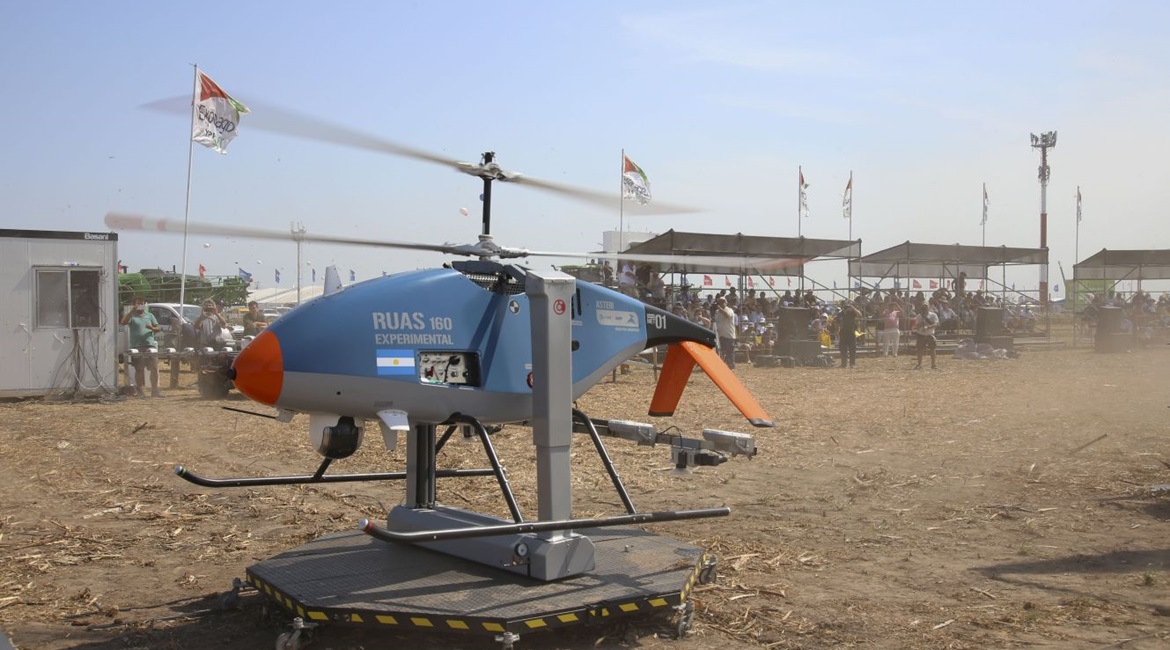
Argentine companies Cicaré, INVAP, and Marinelli have presented for the first time a prototype of the Asteri RUAS 160, a rotary-wing unmanned aerial vehicle (UAV) designed for the defence, security, and agriculture markets.
The presentation took place at the Expoagro agriculture fair, held in San Nicolás, Buenos Aires province, from 10–11 March.
The Asteri consists of a helicopter with counter-rotating rotors of 3.1 m in diameter and no tail rotor. Powered by a 40 hp two-stroke gasoline engine, the Asteri has a cargo capacity of 80 kg and a maximum take-off weight of 160 kg (its empty weight is 80 kg).
The project is intended to develop an unmanned system applicable to military and search-and-rescue missions, but also appropriate for agricultural use, for which a module is added to the platform. Currently, the project remains at the prototype and development stage.
“We are innovating on this version to make improvements and adaptations to the different needs that this technology may have,” said Juan Manuel Cicaré, president of Cicaré Helicópteros. “We are thinking that by 2021 we could be offering it to the market.”
Cicaré claimed that the Asteri “can have a purchase price of only 40-50% the cost of similar systems with electric engines, which are limited in endurance”.
The Asteri is the result of work between helicopter factory Cicaré and Marinelli, which specialises in precision agriculture, that began in 2017. However, the two companies signed an agreement with industrial technology firm INVAP in 2019 to further develop the project.

The prototype of the Asteri RUAS 160, a rotary-wing UAV for the defence, security, and agriculture markets, debuted at this year's Expoagro agriculture fair, held in San Nicolás, Buenos Aires province, from 10–11 March. (Expoagro Press Office)
Looking to read the full article?
Gain unlimited access to Janes news and more...




